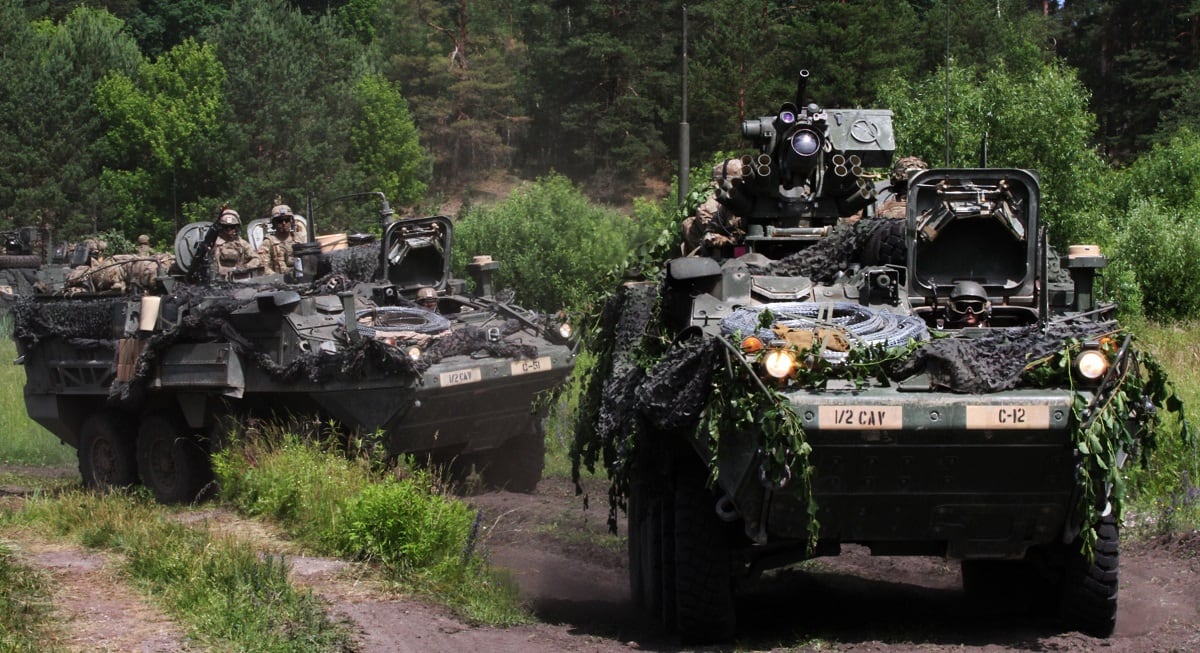In the face of Russian aggression and influence, the United States has ramped up its troop presence in Europe, working to reassure and strengthen ties with allies and partners.
Just in the last few years, the Army has committed to nine-month armored brigade combat team rotations to Europe and significantly boosted the number of joint training operations involving American soldiers and their European partners.
Ahead of the Association of the United States Army’s annual meeting, Army Times reached out to Lt. Gen. Christopher Cavoli, who took command of U.S. Army Europe in January after having spent a career in charge of multiple infantry and armor units.
Answers, provided by Cavoli’s staff, Col. Joseph Scrocca, the USAREUR spokesman, and Lt. Col. Craig Childs, chief of operations, planning and exercises for USAREUR public affairs, have been edited for clarity.
One of the ongoing topics of discussion has been the number of soldiers in Europe. The heel-to-toe rotations are now in place. Please share your thoughts on the size of the force and any plans for increasing troop levels.
We’re currently conducting our third round of Atlantic Resolve armored, aviation and logistical rotations in Europe. These will continue for the foreseeable future. Today there are more than 8,000 rotational soldiers in Estonia, Latvia, Lithuania, Poland, Hungary, Romania and Bulgaria.
For more coverage from the AUSA annual meeting, click here.
These soldiers are conducting continuous, enhanced multinational training and security cooperation activities with allies and partners to improve interoperability; strengthen relationships and trust among allied armies; contribute to regional stability; and demonstrate U.S. commitment to NATO.
Additionally, the National Guard and Army Reserve are critical to the success of our operations and missions in Europe – such as Joint Multinational Training Group-Ukraine, NATO’s Enhanced Forward Presence Battlegroup Poland, the State Partnership Program and several exercises each year.
We have written about the deployment of CROWS-J systems to the 2nd Armored Cavalry in Europe as part of the ongoing Stryker up-gunning program. What’s the progress of that program, those assets?
The fielding of the CROWS-J systems to the 2nd Squadron, 2nd Cavalry Regiment was conducted in September. First Squadron is scheduled to receive their systems in October, followed by the completion of the 3rd and 4th Squadron fielding in December. In total, more than 80 CROWS-J systems will be distributed across 2CR before the New Year. The intent of these upgrades is to provide additional anti-armor capability and protection to our soldiers.
Could you update us on major NATO exercises in Europe this year and upcoming exercises through the end of the year? Any new numbers, new participants or initiatives?
Within the past year, U.S. Army Europe participated in 52 exercises designed to enhance readiness and interoperability with allies and partners. Collectively, these exercises involved 45 countries, with about 29,000 U.S. personnel and more than 68,000 participants from allied and partner nations.
Saber Strike was U.S. Army Europe’s priority exercise in 2018, with the goal of improving interoperability and demonstrating U.S. commitment to the defense of NATO allies. The exercise occurred in June and involved more than 18,000 participants from 19 countries exercising at locations in Estonia, Latvia, Lithuania and Poland.
Saber Junction 2018 had nearly 5,500 participants from 20 allied and partner nations participating at Grafenwoehr and Hohenfels Training Areas [in Germany]. The exercise was designed to assess the readiness of the 173rd Airborne Brigade to execute land operations in a joint, combined environment and to promote interoperability with participating allies and partner nations.
U.S. Army Europe units and personnel will participate in the following upcoming exercises in the next few months:
Exercise Combined Resolve is in its 11th iteration and designed to train the U.S. Army’s Regionally Allocated Forces during their nine-month rotation in theater in support of Atlantic Resolve. Using the Joint Multinational Readiness Center in Germany, the goal of the exercise is to prepare RAF in Europe to operate with allies and partners. The 1st ABCT, 1st Cavalry Division and the 4th CAB, 4th Infantry Division, two Army Reserve units and a South Carolina National Guard unit will participate in the exercise.
Trident Juncture 2018 is NATO's largest high visibility exercise since 2015, with Norway and Iceland serving as host nations. The exercise will involve 40,000 participants, 130 aircraft and 70 vessels from more than 30 nations. The exercise will include components in Norway, Finland, Sweden and in both the Baltic Sea and Atlantic Ocean.
What new equipment, formations are headed to USAREUR in the next year?
U.S. Army Europe will have an increase of approximately 1,500 Soldiers in Germany by 2020. New permanently stationed forces in Europe will result from new activations rather than units re-locating from the United States. New units will include a field artillery brigade headquarters, two multiple launch rocket system battalions, a short-range air defense battalion and additional supporting units. The addition of these forces increases U.S. Army readiness in Europe and ensures we are better able to respond to any crisis.
What are some of the challenges you see for USAREUR in the near term, one to three years?
U.S. Army Europe is here to support the combatant command, and we accomplish that through readiness, setting the theater and interoperability. Our number one priority is readiness, which must be sustained through training, personnel and equipment. We set the theater to support operational plans and contingencies throughout Europe and enable an efficient flow of forces as needed, so we must maintain critical capabilities and enhance interoperability. Finally, we achieve interoperability through our tiered program of exercises, which are designed to provide a joint, multinational environment that prepares allies and partners to train as they fight. Through approximately 50 exercises and training events each year we improve interoperability, strengthen relationships and contribute to regional stability.
Todd South has written about crime, courts, government and the military for multiple publications since 2004 and was named a 2014 Pulitzer finalist for a co-written project on witness intimidation. Todd is a Marine veteran of the Iraq War.




